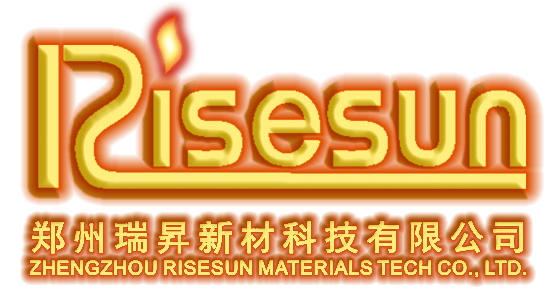08
2024
-
10
Unlocking the Power of MoSi2 Heating Elements for Industrial Applications
Unlocking the Power of MoSi2 Heating Elements for Industrial Applications Table of Contents 1. Introduction to MoSi2 Heating Elements 2. Key Properties of MoSi2 Heating Elements 3. Advantages of Using MoSi2 Heating Elements in Industry 3.1 Superior Temperature Resistance 3.2 Enhanced Durability and Lifespan 3.3 Energy Efficiency and Cost-Effectiveness 4. Applications of MoSi2 Heating Elements 4.1
Unlocking the Power of MoSi2 Heating Elements for Industrial Applications
Table of Contents
1. Introduction to MoSi2 Heating Elements
2. Key Properties of MoSi2 Heating Elements
3. Advantages of Using MoSi2 Heating Elements in Industry
3.1 Superior Temperature Resistance
3.2 Enhanced Durability and Lifespan
3.3 Energy Efficiency and Cost-Effectiveness
4. Applications of MoSi2 Heating Elements
4.1 Industrial Furnaces
4.2 Semiconductor Manufacturing
4.3 Glass and Ceramics Processing
5. Installation and Maintenance of MoSi2 Heating Elements
6. Comparison with Other Heating Elements
7. Future Trends in MoSi2 Heating Technologies
8. Frequently Asked Questions (FAQs)
9. Conclusion
1. Introduction to MoSi2 Heating Elements
MoSi2 heating elements, made primarily from molybdenum disilicide, are pivotal in high-temperature industrial processes. Their robust structural integrity and thermal stability make them ideal for various applications where conventional heating solutions may falter. By understanding these elements' unique characteristics, businesses can leverage their capabilities to enhance manufacturing efficiency and product quality.
2. Key Properties of MoSi2 Heating Elements
MoSi2 heating elements exhibit distinct properties that set them apart from other heating solutions. Some of the most notable attributes include:
- **High-Temperature Resistance**: MoSi2 can withstand temperatures exceeding 1600°C, enabling it to perform in extreme environments.
- **Corrosion Resistance**: These elements maintain their integrity in oxidizing atmospheres, making them suitable for various applications.
- **Low Thermal Expansion**: The thermal stability of MoSi2 minimizes the risk of cracking and distortion under high temperatures.
3. Advantages of Using MoSi2 Heating Elements in Industry
Industries consistently seek reliable heating solutions that enhance productivity and reduce operational costs. MoSi2 heating elements offer several compelling advantages:
3.1 Superior Temperature Resistance
MoSi2 heating elements are engineered to operate at elevated temperatures, which is crucial for processes like sintering and melting materials. Their ability to perform consistently under such conditions results in better product quality and reduced downtime.
3.2 Enhanced Durability and Lifespan
The lifespan of MoSi2 heating elements often surpasses that of traditional heating elements due to their robust construction. This durability translates to lower replacement costs and less frequent maintenance, making them a wise investment.
3.3 Energy Efficiency and Cost-Effectiveness
Despite their initial investment, MoSi2 heating elements can lead to significant energy savings over time. Their efficient heat transfer mechanisms reduce overall energy consumption, directly impacting operational costs.
4. Applications of MoSi2 Heating Elements
MoSi2 heating elements find utility across various industries due to their versatility and performance characteristics. Their applications include:
4.1 Industrial Furnaces
These elements are a staple in industrial furnace setups, providing the necessary heat for melting metals and processing ceramics. Their high-temperature capabilities ensure that materials reach the required temperatures for effective processing.
4.2 Semiconductor Manufacturing
In the semiconductor industry, precision heating is critical. MoSi2 heating elements enable manufacturers to maintain stringent temperature controls, essential for producing high-quality semiconductor wafers.
4.3 Glass and Ceramics Processing
The glass and ceramics sectors benefit from the consistent heating offered by MoSi2 elements. They provide uniform heat distribution, which is crucial for preventing defects during the firing process.
5. Installation and Maintenance of MoSi2 Heating Elements
Proper installation and maintenance are crucial for maximizing the performance of MoSi2 heating elements. Installation should be conducted in accordance with manufacturer guidelines, ensuring optimal placement and electrical connections. Regular inspections for signs of wear or damage can prevent early failures and extend the lifespan of the elements.
6. Comparison with Other Heating Elements
When comparing MoSi2 heating elements with alternatives such as silicon carbide or traditional metal heating elements, several factors come into play. MoSi2 elements excel in high-temperature applications, showing superior resistance to oxidation and thermal shock. In contrast, silicon carbide may offer advantages in specific conditions but often cannot match the high-temperature capabilities of MoSi2.
7. Future Trends in MoSi2 Heating Technologies
As industries evolve, the demand for innovative heating solutions continues to grow. Future trends in MoSi2 heating technologies may include advancements in material science, leading to even more efficient designs and enhanced performance characteristics. Research into improved manufacturing processes could also reduce costs, making MoSi2 heating elements more accessible to a broader range of industries.
8. Frequently Asked Questions (FAQs)
What are MoSi2 heating elements made of?
MoSi2 heating elements are primarily composed of molybdenum disilicide, a compound known for its high-temperature stability and resistance to oxidation.
What industries commonly use MoSi2 heating elements?
Industries such as metal processing, semiconductor manufacturing, and ceramics production frequently utilize MoSi2 heating elements due to their superior performance in high-temperature environments.
How do I maintain MoSi2 heating elements?
Regular inspections for wear and tear, along with cleaning to remove any build-up, are essential for maintaining MoSi2 heating elements and ensuring their longevity.
Can MoSi2 heating elements be used in reducing atmospheres?
Yes, while MoSi2 heating elements are primarily designed for oxidizing atmospheres, they can also be used in reducing environments with proper precautions.
What is the maximum temperature MoSi2 heating elements can reach?
MoSi2 heating elements can typically operate at temperatures up to 1600°C, making them suitable for a wide range of high-temperature applications.
9. Conclusion
MoSi2 heating elements represent a cutting-edge solution for industrial heating needs. Their unique properties, including high-temperature resistance, durability, and energy efficiency, make them indispensable in various applications. By understanding how to implement and maintain these elements, industries can unlock their full potential, driving productivity and reducing costs. As technology and materials science continue to advance, the future of MoSi2 heating elements looks promising, paving the way for even greater innovations in industrial heating solutions.



